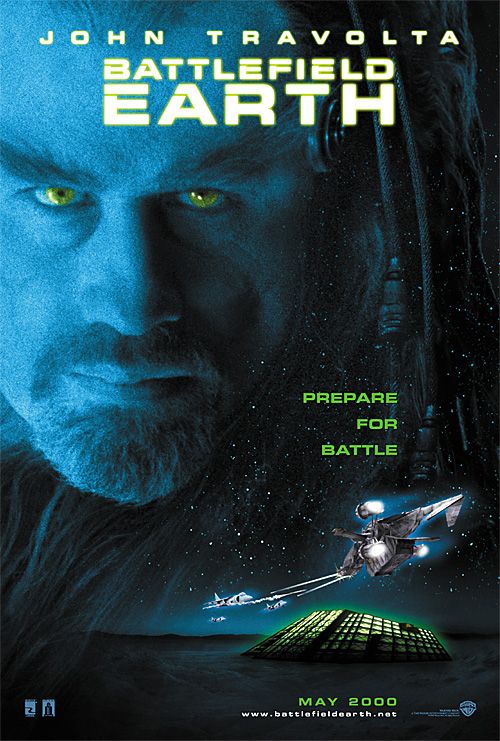
The world of music, for all its harmonious beauty and collective joy, is also a fascinating crucible of intense personalities, artistic visions, and sometimes, outright animosity. We often see the polished final product – the hit songs, the electrifying performances, the cohesive albums – but beneath the surface, a rich tapestry of drama, competition, and outright conflict often fuels the creative engine. These aren’t just petty squabbles; they’re often deeply rooted clashes that reflect divergent artistic paths, personal betrayals, and the immense pressure of fame, all playing out on a public stage.
From sibling rivalries that spilled from childhood into sold-out arenas, to the bitter legal battles over band names and publishing rights, these feuds offer a unique lens through which to understand the human element behind the music. They remind us that even the most celebrated partnerships can fray under the weight of ego, expectation, and the ever-present demand for artistic authenticity. It’s a testament to the raw power of creative ambition, where the very chemistry that sparks genius can also ignite devastating infernos.
In this deep dive, we’re pulling back the curtain on some of the most controversial and captivating public feuds in music history. Get ready to explore the stories behind the headlines, the scathing diss tracks, and the unforgettable moments where musical titans traded blows, leaving indelible marks not only on their relationships but also on the very fabric of pop culture. We begin our journey by looking at the seismic splits within bands that reverberated through generations, altering the course of music as we know it.
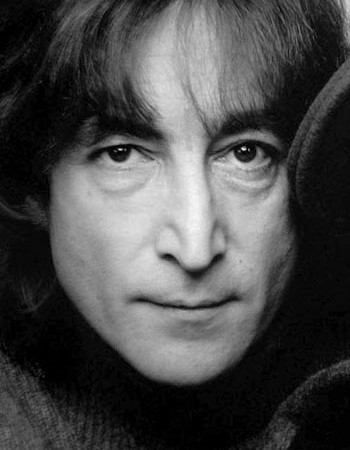
1. **John Lennon vs. Paul McCartney: The Bittersweet Harmony of Discord**The breakup of The Beatles was never going to be a quiet affair, but the immediate aftermath saw the generation-defining duo take their long-simmering squabbles from behind closed doors straight into the public eye. As McCartney moved to legally dissolve the band’s partnership in December 1970, Lennon wasted no time airing his grievances in the pages of Rolling Stone, igniting a public spat that captivated the world and left fans reeling.
Lennon’s conversation with magazine founder Jann Wenner was a masterclass in unfiltered resentment. He didn’t hold back, lambasting McCartney’s supposedly overbearing nature in the studio, declaring, “I pretty damn well know we got fed up of being sidemen for Paul.” He also criticized McCartney’s leadership after the tragic death of manager Brian Epstein, and openly discussed the other Beatles’ reaction to his relationship with Yoko Ono, stating, “Ringo was all right, but the other two really gave it to us. I’ll never forgive them.” These were not just words; they were a public dismantling of a legendary friendship.
McCartney’s initial public response was more understated, but no less pointed. On his 1971 album *Ram*, he included a subtle jab at Lennon on the opening track, “Too Many People,” mocking his former bandmate’s sudden fervor for world-peace crusades with the line “Too many people preaching practices.” He also sang, “You took your lucky break and broke it in two,” a line he later admitted was aimed squarely at Lennon. These lyrical barbs, though perhaps lost on some, certainly registered with their intended target.
Lennon’s retort was anything but subtle. His 1971 album *Imagine* featured “How Do You Sleep?,” a diss track so vicious it bordered on the obscene. Footage from the session even shows Lennon, Ono, and guest guitarist George Harrison laughing as they delivered lines like, “The sound you make is Muzak to my ears/You must have learned something in all those years,” and an undeniable dig at McCartney’s most famous composition: “The only thing you done was ‘Yesterday.’” It was a brutal lyrical assault that left no room for interpretation.
Despite the bitterness, McCartney seemed reluctant to fully reciprocate the vitriol. His major public counter was the mournful “Dear Friend” from 1971’s *Wild Life*, a delicate lament where he wondered if this was “really the borderline” of their relationship. It was an olive branch, albeit one that took considerable time to be accepted. While friendly calls from McCartney were initially met with Lennon’s suspicious “Yeah, yeah, whatdaya want,” relations did eventually improve enough by the mid-Seventies for McCartney to occasionally visit Lennon’s Upper West Side apartment. They’d reminisce and discuss mundane topics like baking bread or their young children, but any hopes of a permanent, full reconciliation were tragically extinguished by an assassin’s bullet on December 8th, 1980.
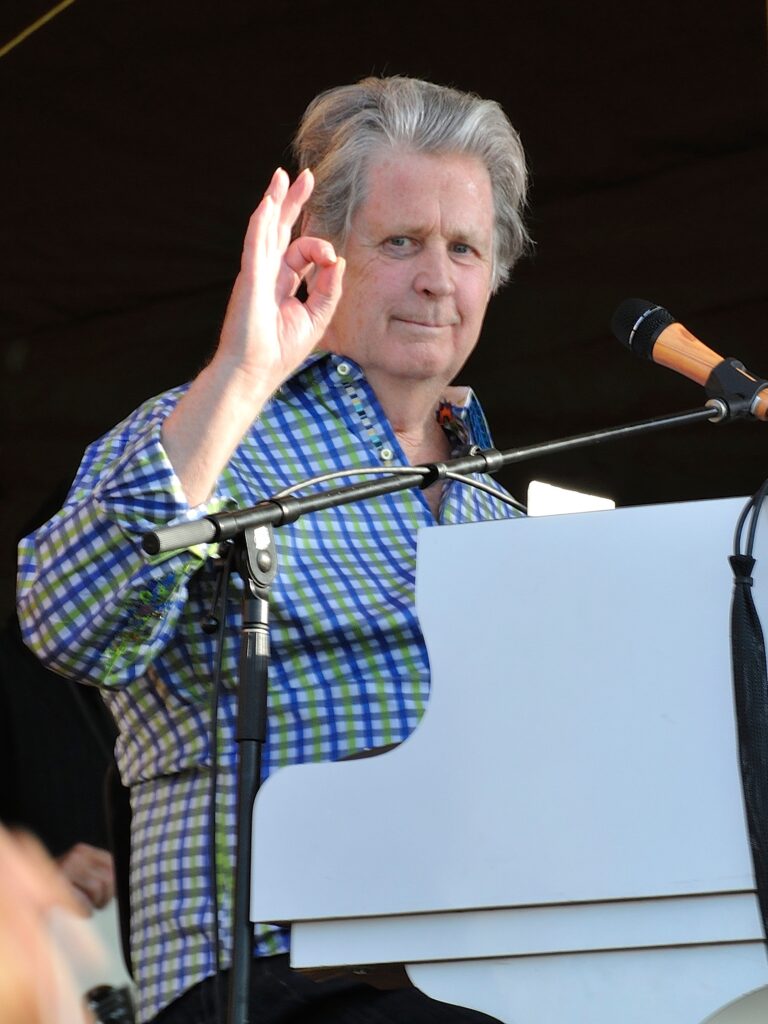
2. **Brian Wilson vs. Mike Love: The Battle for the Beach Boys’ Soul**The discord between cousins Brian Wilson and Mike Love, the creative forces behind The Beach Boys, began as early as the mid-Sixties. Wilson, the band’s acting maestro, yearned to propel the group beyond their carefree “fun-in-the-sun” image, envisioning a more experimental and complex sound. Love, on the other hand, found this new musical daring pretentious, fearing it would alienate the loyal fanbase originally won over by their surfing anthems. It was a fundamental clash over identity and artistic direction that would define their relationship.
The stress became intensely palpable during the 1966 sessions for *Pet Sounds*, widely considered Wilson’s most experimental work to date. Love was skeptical of augmenting their signature sound with a “fleet of session musicians wielding exotic instruments.” He also resented Wilson taking the majority of the lead vocals himself and, perhaps more significantly, took issue with much of the album’s lyrical content. He admitted to Goldmine in 1992, “Some of the words were so totally offensive to me that I wouldn’t even sing ’em because I thought it was too nauseating.” This was a clear indication of their widening artistic chasm.
A prime example of their lyrical disagreement manifested in a new tune Wilson presented with the LSD-drenched title “Hang Onto Your Ego.” Love, hardly a psychedelic warrior, firmly put his foot down and refused to participate, leading to the title being promptly changed to “I Know There’s an Answer.” The clashes only intensified when Wilson embarked on his next ambitious project, the “teenage Symphony to God” dubbed *SMiLE*. It was during this period that Love supposedly delivered his infamous warning: “Don’t with the formula!” a remark that made its first appearance in a 1971 Rolling Stone profile, though Love later dismissed it in his memoir as “the most famous thing I’ve ever said, even though I never said it.” Regardless of its verbatim accuracy, the sentiment perfectly encapsulated the deep division, with Wilson later claiming Love was “disgusted” by the project.
Wilson’s well-documented mental health struggles further drove a wedge between the cousins, and their relationship was severely strained by a series of protracted courtroom battles. In the early Nineties, Love filed a lawsuit asserting he wasn’t credited on many songs he had co-written with Wilson. A jury ultimately ruled in his favor, awarding Love co-writer credit on 35 titles, including some of the band’s biggest hits. Years later, the death of bandmate Carl Wilson splintered the remaining group into opposing camps, all vying in legal arenas for the right to use the Beach Boys name. Love eventually won, securing the right to lease the name from Brother Records.
Despite the lengthy and often bitter history, a glimmer of hope appeared for the Beach Boys’ 50th anniversary in 2012. The surviving members buried the hatchet long enough to record a new album and embark on a triumphant tour, a seemingly long-awaited happy ending. However, this peace proved fleeting as Love announced he would continue touring as The Beach Boys without Wilson later that year. A disheartened Wilson told Rolling Stone’s Jason Fine in mid-2017, “The Beach Boys might get together again – but not with me,” solidifying the tragic reality that some rifts simply run too deep to fully mend.
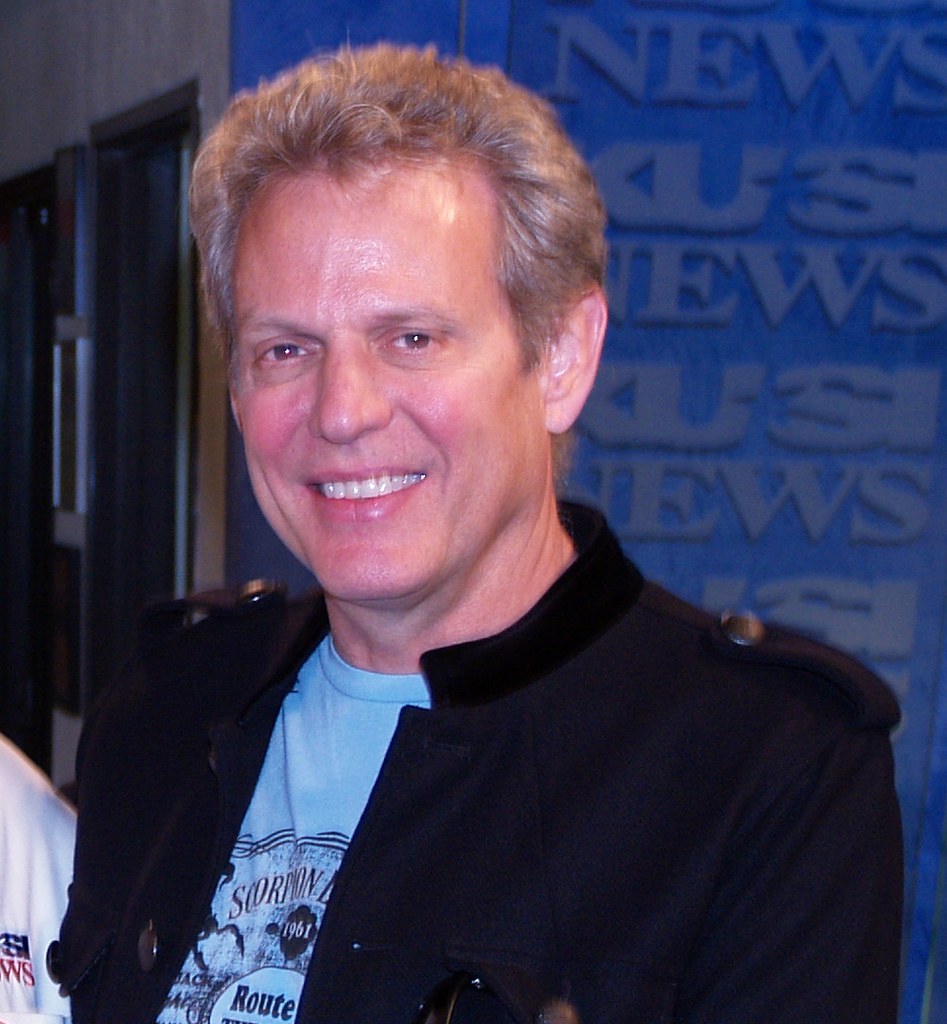
3. **Don Felder vs. Don Henley and Glenn Frey: Eagles Flying Apart**The Eagles, despite their smooth harmonies and laid-back image, were rarely a bastion of peaceful, easy feelings within their ranks. The most extreme schism began to widen during the intense sessions for *Hotel California* in 1976. Guitarist Don Felder expressed a desire to sing his composition “Victim of Love,” but his bandmates, Don Henley and Glenn Frey, were less than pleased with his initial takes, setting the stage for a memorable slight.
According to Frey, who stated in the band’s authorized 2013 documentary, *The History of the Eagles*, “Don Felder, for all of his talents as a guitar player, was not a singer.” Henley concurred, adding that Felder’s vocal performance “simply did not come up to band standards.” In a move that Felder never forgot, while he was at dinner with the group’s manager, Irving Azoff, the rest of the band wiped his vocals and rerecorded the track with Henley on lead. It was a potent message about creative control and hierarchy within the group.
The Eagles struggled to follow up the monumental success of *Hotel California*, and sessions for what would become *The Long Run* dragged on for a grueling 18 months. During this period, Felder found himself increasingly at odds with Henley and Frey, sarcastically dubbing them “the Gods” in private. The resentment reached a boiling point on July 31st, 1980, the night the band played a benefit concert for California Senator Alan Cranston at Long Beach Arena.
Felder, who preferred to steer clear of political causes, was frustrated about having to go along with Henley and Frey’s wishes. When the Senator thanked each musician individually at a pre-show meet-and-greet, Felder’s terse reply, “You’re welcome, Senator … I guess,” ignited Frey’s fury. Frey reportedly laid into Felder as soon as the politician was out of sight, and the fight shockingly continued – on-mic – in the middle of the night’s performance. Frey later recalled the venomous exchange: “We’re onstage, and Felder looks back at me and says, ‘Only three more songs till I kick your ass, pal.’ And I’m saying, ‘Great. I can’t wait.’” He added, “We’re out there singing ‘Best of My Love,’ but inside both of us are thinking, ‘As soon as this is over, I’m gonna kill him.’” That night marked the abrupt end of the Eagles’ initial run.
The band famously reconvened in 1994 for *Hell Freezes Over*, an album, tour, and MTV special that kicked off a long stream of well-regarded, blockbuster tours. However, the tenuous peace was disrupted when Felder began raising questions about the bottom line. Though the band had split their revenue equally in its Seventies heyday, he now complained that Henley and Frey insisted on a higher percentage for themselves. Henley and Frey did not take kindly to having their motives questioned and, on February 6th, 2001, they fired Felder from the Eagles.
This dismissal triggered an avalanche of messy legal proceedings, with Felder filing suits for wrongful termination, breach of contract, and fiduciary duty. The lawsuits were eventually settled out of court for an undisclosed sum, but the wounds never truly healed. When Glenn Frey tragically died in January 2016, Felder paid him a warm tribute in the Associated Press, expressing a lingering wistfulness: “I had always hoped somewhere along the line, he and I would have dinner together, talking about old times and letting it go with a handshake and a hug.” It was a poignant reminder of what might have been.
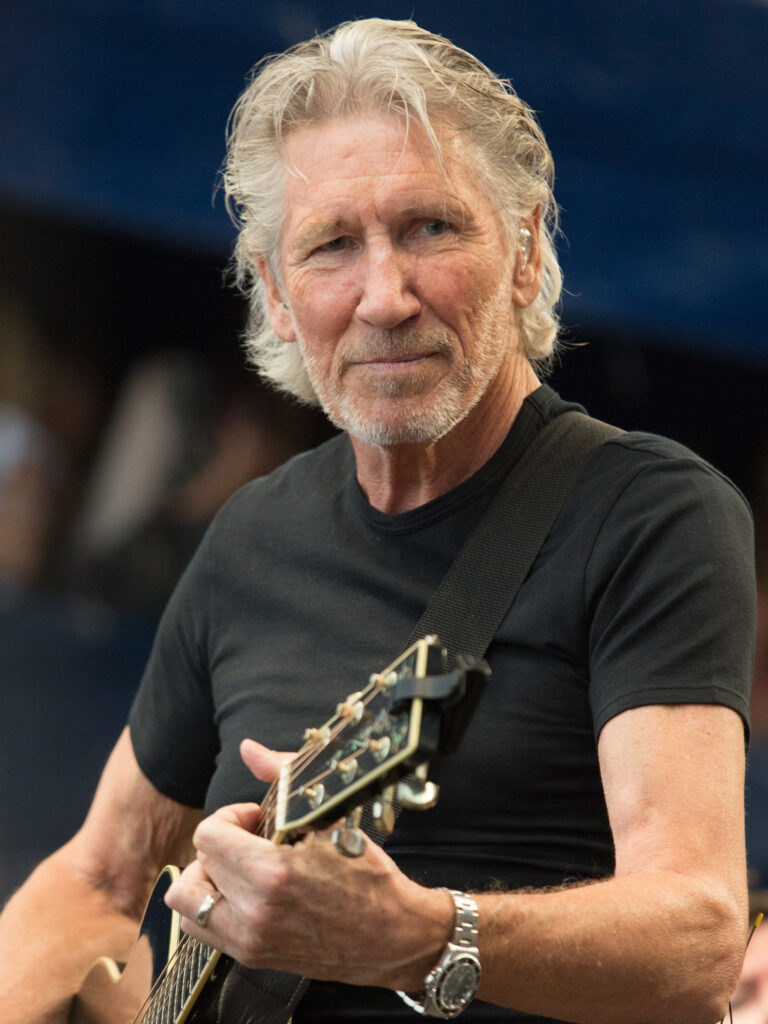
4. **Roger Waters vs. David Gilmour: The Division Bell of Pink Floyd**Pink Floyd, one of rock’s most celebrated and enigmatic bands, found itself deeply divided during the intense recording sessions for *The Wall* in 1979. David Gilmour, Nick Mason, and Rick Wright grew increasingly frustrated by Roger Waters’ perceived unwillingness to compromise in the studio, leading to a profound rift over creative control and leadership. Gilmour articulated this frustration to Rolling Stone in 1987, stating that Waters “forced his way to become that central figure.”
Waters, for his part, offered a different narrative, claiming he was pushed into the role of creative taskmaster due to the diminishing input of his (to his mind) less talented bandmates. He countered in Rolling Stone with a blunt assessment of his colleagues’ lyrical abilities: “There was no point in Gilmour, Mason or Wright trying to write lyrics. Because they’ll never be as good as mine. Gilmour’s lyrics are very third-rate.” This stark difference in self-perception and respect for each other’s contributions laid bare the deep-seated tensions.
The global success of *The Wall* only exacerbated these divisions rather than healing them. On the accompanying tour, Waters notoriously stayed at separate hotels and rarely spoke with his bandmates offstage, isolating himself further. As work began on the follow-up, 1983’s *The Final Cut*, a less-than-enthusiastic Gilmour feared that the album was simply “padded with rejects from *The Wall*.” The conflicts grew increasingly hostile, culminating in Gilmour’s name ultimately being removed from the album’s production credits, a clear sign of the fractured relationship.
When Waters decided to pursue solo endeavors in December 1985, he attempted to dissolve Pink Floyd in his wake, declaring it “a spent force creatively.” Gilmour vehemently disagreed, forging ahead with Wright and Mason to record a new album as Pink Floyd. An irate Waters took legal action to bar Gilmour and the rest of his former colleagues from using the band’s name – and even the famed inflatable pig mascot during live performances. While Gilmour ultimately won the court battle, the war fiercely raged in the court of public opinion.
The remaining Floyd members characterized their former bassist as a vindictive egomaniac, while Waters, in turn, portrayed Gilmour and Co. as merely coasting on the back of his genius. When the scaled-down Floyd released *A Momentary Lapse of Reason* in 1987, Waters dismissed it with characteristic venom as “a very facile but quite clever forgery.” Despite years of animosity, tensions eased enough by July 2005 for the band’s classic lineup to reunite for a memorable set at the Live 8 global charity event. Waters even surprised fans in 2011 by bringing out Gilmour and Mason for a guest appearance and, by 2013, admitted he regretted the lawsuit over the band’s name. However, when Gilmour and Mason polished off old demos for release as a new Floyd album, *The Endless River*, in 2014, Waters declined to participate, illustrating that while some bridges can be rebuilt, others remain uncrossed.

5. **Ray Davies vs. Dave Davies: The Kinks’ Sibling Showdown**Long before the Gallagher brothers became synonymous with Britpop sibling rivalry, the world had the Davies brothers of The Kinks, a pair whose turbulent relationship fueled both their creative genius and their legendary squabbles. Ray Davies, the elder brother, reflected on their dynamic, saying, “We were battlers. But the very thing that makes a band special is what ultimately causes it to break up.” This insight perfectly captured the essence of their bond.
According to Dave, their deep-seated differences originated in childhood. He famously quipped, “I think Ray has been happy for only three years in his life. And those were the three years before I was born.” One incident from their youth seems particularly indicative of their future conflicts: a mock boxing match that turned serious when Ray collapsed after hitting his head. When Dave bent down in concern, Ray immediately opened his eyes and socked him in the face. Dave later reflected, “It’s symbolic of our whole relationship, really.”
Once they became bandmates, the fighting intensified, taking place practically anywhere: onstage, in the studio, and even in the back of a limousine. Even major family occasions couldn’t escape their volatile dynamic. When Ray asked Dave to be his best man at his 1964 wedding, the younger brother got extremely drunk and announced he was “too pissed” to give the speech, ensuring the event would be memorable for all the wrong reasons.
The Kinks performed together for the last time in 1996, shortly before Dave’s ill-fated 50th birthday party. Dave recalled the dismal affair: “Ray had the money and I didn’t. So he offered to throw it for me. Just as I was about to cut the cake, Ray jumped on the table and made a speech about how wonderful he was. He then stamped on the cake.” This act of public humiliation cemented a period of estrangement, and they would see very little of each other for many years.
Begrudging fraternal love briefly united them in 2004 when Dave suffered a serious stroke. Ray invited Dave to stay at his home, but old jealousies quickly resurfaced. Dave recounted, “I was ill in bed and could barely move, but he started saying: ‘I’m sick, I’m sick!’ He was screaming in pain from his stomach.” A medical examination revealed nothing unusual. Dave’s blunt assessment: “He just wanted attention.” The friction continued into 2013 when they fought over the genesis of what might be The Kinks’ greatest legacy: the fuzzed-out overdrive guitar distortion heard on their 1964 breakthrough hit, “You Really Got Me.” Ray claimed he came up with the idea of slashing the speaker cone of Dave’s guitar amplifier, while Dave asserted he developed the technique himself. Dave furiously accused Ray of perpetuating a myth in his West End musical, *Sunny Afternoon*, based on the songs of The Kinks, posting on Facebook: “My brother is lying. I am just flabbergasted and shocked at the depth of his selfish desire to take credit for everything.” Despite these enduring hostilities, they were able to put their differences aside long enough to appear together onstage in December 2015 to perform the song in question before an audience in London, their first live collaboration in nearly two decades.
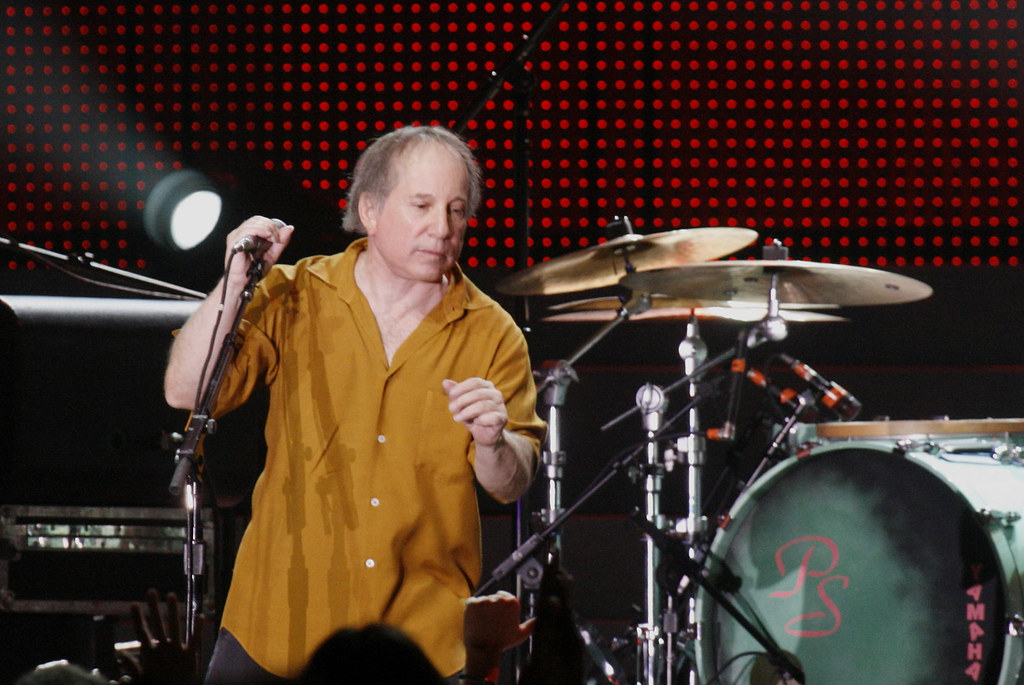
6. **Paul Simon vs. Art Garfunkel: The Sounds of Silence and Discord**Paul Simon and Art Garfunkel, childhood friends who first recorded together as teenagers in 1957, forged one of music’s most iconic partnerships. Yet, beneath the veneer of celestial harmonies lay a simmering tension, highlighted early on by a significant betrayal. As Garfunkel began to focus on his academic career, Simon quietly inked a solo side deal, an extracurricular endeavor Garfunkel perceived as a serious breach of trust upon discovery, laying the groundwork for decades of unresolved resentment.
After the duo achieved global fame in the mid-Sixties, these long-held resentments became a ticking time bomb. The detonation occurred in late 1968 when director Mike Nichols offered both musicians roles in his film adaptation of *Catch-22*. Simon’s character was cut before production began, leaving Garfunkel to fly solo to shoot in Mexico. Initially, Simon had been supportive, even penning “The Only Living Boy in New York” as a tender good luck wish for his old friend. However, as the three-month film shoot stretched into nearly a year, Simon grew increasingly frustrated by the delay, further straining their fragile relationship.
Garfunkel’s eventual return did little to repair the damage. The two immediately clashed over differing musical ideas for what would become their magnum opus, *Bridge Over Troubled Water*. Simon had written a politically charged song called “Cuba Si, Nixon No,” which he presented as a potential 12th track. Garfunkel, turned off by its overt political commentary, suggested doing a Haitian Creole chorale called “Feuilles-O.” Neither side would budge. The album was ultimately released with only 11 songs, and the pair decided to go their separate ways, marking a significant pause in their legendary collaboration.
It was during a professional nadir in 1981 that they agreed to reunite for a free concert in New York’s Central Park, a monumental event that drew an unparalleled 500,000 people to the Great Lawn. This success led to plans for a world tour in May 1982, but it wasn’t long before they fell back into their destructive patterns. Things proved no better in the studio as they attempted to work on an all-new Simon & Garfunkel album, provisionally titled *Think Too Much*. In a decisive move, Simon ultimately wiped Garfunkel’s vocal tracks and set about finishing the songs as a solo effort, underscoring the deep-seated creative and personal chasm between them.
Their fraught dynamic was starkly evident during their somewhat frosty Rock and Roll Hall of Fame induction speech in 1990. Garfunkel began sincerely, stating, “I want to thank most of all the person who has most enriched my life by putting these great songs through me: My friend Paul here.” It should have been a touching moment of reconciliation, but Simon’s parting joke immediately undercut it: “Arthur and I agree about almost nothing. But it’s true, I have enriched his life quite a bit, now that I think about it.” Despite several high-profile reunion tours in 1993, 2003, and 2010, the reconciliation never truly stuck. It seems that the same unexplainable force that blended their voices together in celestial harmony also compelled them to spend the majority of their time apart, a testament to their enduring, complicated bond.
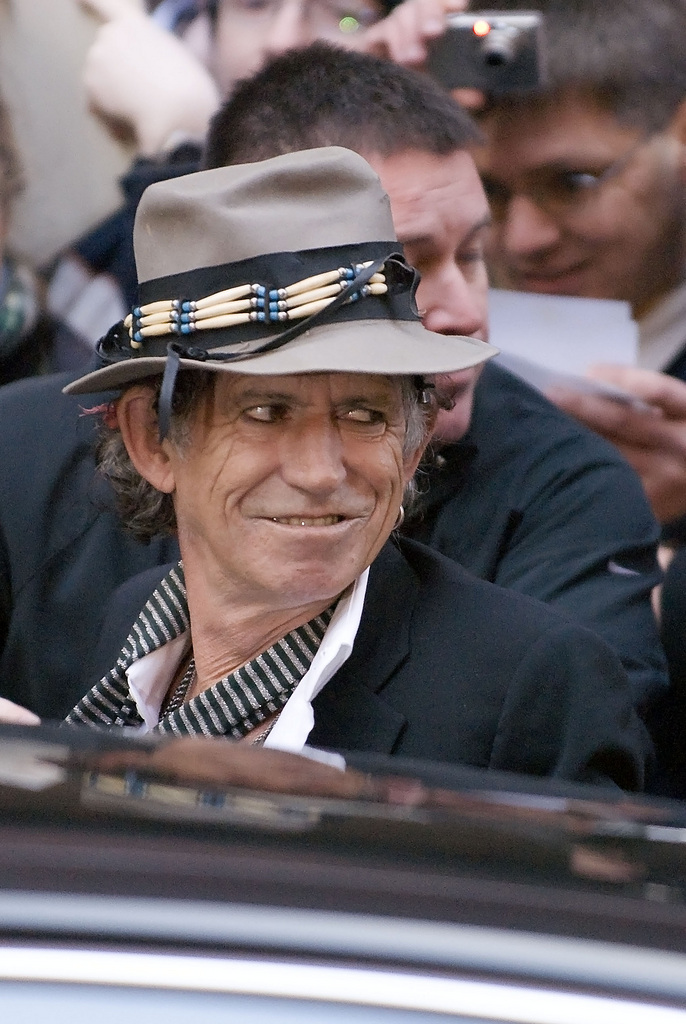
7. **Keith Richards vs. Elton John: A Clash of Rock Royalty**The music world rarely expected a public feud between the notoriously rakish Keith Richards of The Rolling Stones and the flamboyant pop icon Elton John, yet their distinct personalities collided with memorable results. Richards initiated the exchange in a 1988 Rolling Stone interview, dismissing John with the backhanded compliment, “Lovely bloke… but posing.” The venomous dig was reportedly prompted by John’s recent single, “I Don’t Wanna Go On with You Like That,” though some speculated Richards still harbored a grudge from John’s overextended, 10-song guest appearance at a 1975 Rolling Stones concert in Fort Collins, Colorado.
Whatever the underlying cause, Richards didn’t hold back when asked his thoughts on “Candle in the Wind 1997,” John’s musical elegy for his friend Princess Diana. Though profits from the single were donated to charity, Richards, in an October 1997 interview with Entertainment Weekly, declared the rewrite of John’s 1973 tribute to Marilyn Monroe “did jar a bit.” He went on to famously pronounce it “Songs for Dead Blondes,” adding, “I’d find it difficult to ride on the back of something like that myself, but Reg [John’s birth name] is showbiz.” He echoed this sentiment shortly thereafter, also taking aim at John’s theatrical stage style.
John, never one to shy away from a fight, fired back with equal ferocity in an interview published by the Daily News that same month. His response was deeply personal, stating, “I’m glad I’ve given up drugs and alcohol. It would be awful to be like Keith Richards. He’s pathetic, poor thing. It’s like a monkey with arthritis, trying to go onstage and look young. I have great respect for the Stones but they would have been better if they had thrown Keith out 15 years ago.” He concluded with a blunt assessment: “I just think he’s an asshole and I have for a long time.” John also skillfully refuted the accusations of Vegas-level theatrics, countering, “Please, if the Rolling Stones aren’t show business, then what is? You know, with their inflatable women.”
John continued his offensive in 2011 when he criticized Richards’ recent autobiography, *Life*, which featured some unflattering details about Mick Jagger’s anatomy. He questioned the appropriateness of such revelations, stating, “I was a bit put off by hearing about the bit about Mick Jagger’s .” He further elaborated, drawing a comparison to his own professional relationship, “If I said that [songwriting partner] Bernie Taupin was a miserable twat and had a small penis, he’d probably never talk to me again. It’s like, why do that?” These exchanges revealed a deep disdain, moving far beyond mere artistic differences into personal territory.
Yet, in a testament to the unpredictable nature of rock star relationships, relations between the two icons thawed in September 2015. Fellow Stone Ronnie Wood was able to broker a truce long enough for Richards and John to pose for a photo at the GQ Awards in London, a surprising, if brief, moment of detente between two of music’s most outspoken and iconic figures.
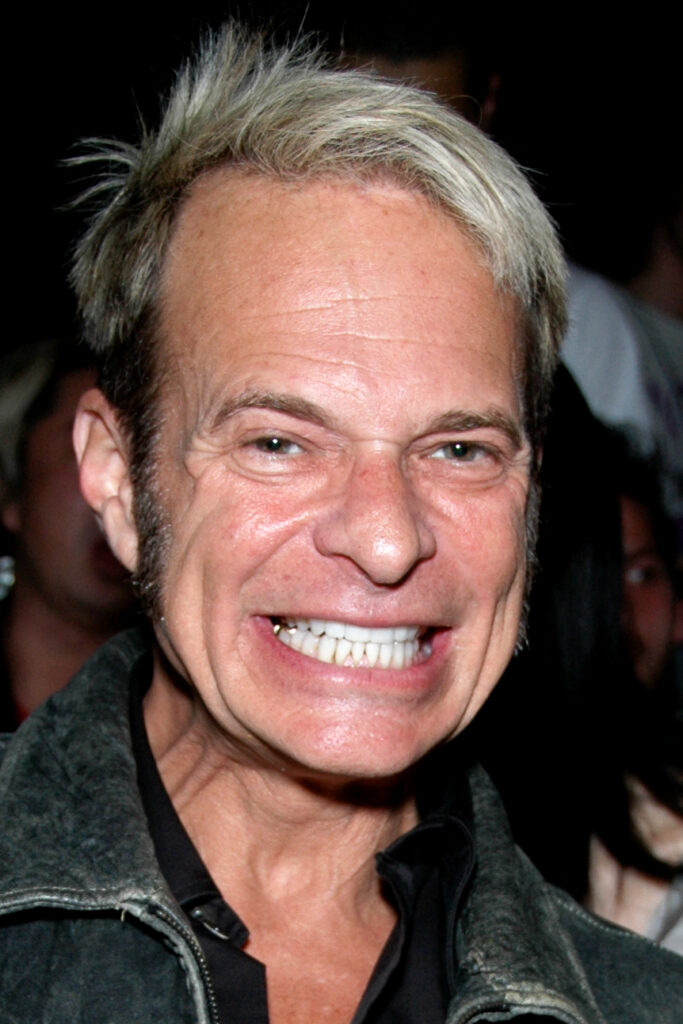
8. **David Lee Roth vs. Eddie Van Halen: The Jump-Started Rivalry**The iconic Van Halen, for all its electrifying guitar riffs and anthemic choruses, was often a powder keg of personal and creative conflict, particularly between frontman David Lee Roth and guitar virtuoso Eddie Van Halen. The tension truly began to boil during the 1983 sessions for their groundbreaking album *1984*, when Roth reportedly resented recording at Eddie’s newly built home studio, 5150. He viewed this as granting Eddie too much creative control, laying the groundwork for their rift, even as the studio produced their only Number One hit, “Jump.”
By 1985, Roth’s focus shifted decisively towards solo ambitions, including an EP, *Crazy from the Heat*, and a planned film. Eddie Van Halen, known for his bluntness, declared in Rolling Stone, “The band as you know it is over. Dave left to be a movie star. He even had the balls to ask if I’d write the score for him.” Though the movie never materialized, a chasm had formed. A brief reunion in 1996 for a *Greatest Hits* album, including two new tracks, offered fans a flicker of hope.
This fragile truce, however, shattered spectacularly at the MTV Video Music Awards. Roth, ever the showman, went wildly off script, trumpeting the original band’s importance. A visibly annoyed Eddie had to physically steer him away from the microphone, only for Roth to dance maniacally in the background, a “demented grin” fueling Eddie’s irritation. Backstage, Eddie denied reunion tour reports, citing hip surgery, to which Roth cuttingly retorted, “Tonight’s about me, man, and not your ing hip.” The confrontation escalated, requiring a tour manager to intervene, with Eddie famously spitting, “If you ever speak like that to me again you better be wearing a cup.'” It would take over a decade for such intense animosity to cool, solidifying the notion that some creative partnerships are just too volatile.

9. **The “Roxanne” Wars: Hip-Hop’s First Great Diss Battle**Before hip-hop beefs became commonplace, the scene was rocked by the sprawling, spontaneous lyrical showdown known as “The Roxanne Wars.” It all started innocently in 1984 when 14-year-old Lolita Shanté Gooden overheard producers Marley Marl and Mr. Magic in Queensbridge complaining about hip-hop collective UTFO’s last-minute cancellation. Gooden, an aspiring emcee, boldly offered to craft a diss track, a challenge the men accepted. She borrowed the instrumental from UTFO’s “Roxanne, Roxanne,” and, assuming the persona of the elusive heartbreaker, reportedly freestyled her obscenity-laden verse in a single take.
The track, “Roxanne’s Revenge,” released under Roxanne Shanté, exploded onto the scene, becoming an instant radio hit and selling thousands of copies overnight. UTFO, understandably chastened, swiftly retaliated. They enlisted Elease Jack (later Adelaida Martinez) to create “the Real Roxanne,” recording a song of the same name. While not a direct verbal assault on the teenage Shanté, it effectively challenged her authenticity, keeping the nascent beef simmering and sparking a unique phenomenon.
The chart success of these initial “Roxanne” songs sparked a lyrical gold rush. Over the next year, an estimated 30 to 100 tracks flooded the airwaves, portraying every conceivable Roxanne associate, from “The Parents of Roxanne” to “Roxanne’s Doctor.” This unprecedented outpouring highlighted the genre’s creative energy. Eventually, “Roxanne fatigue” set in, but not before UTFO and Shanté delivered final blows. The lyrical inferno died down, leaving a fascinating legacy as one of hip-hop’s most widespread and original public clashes.
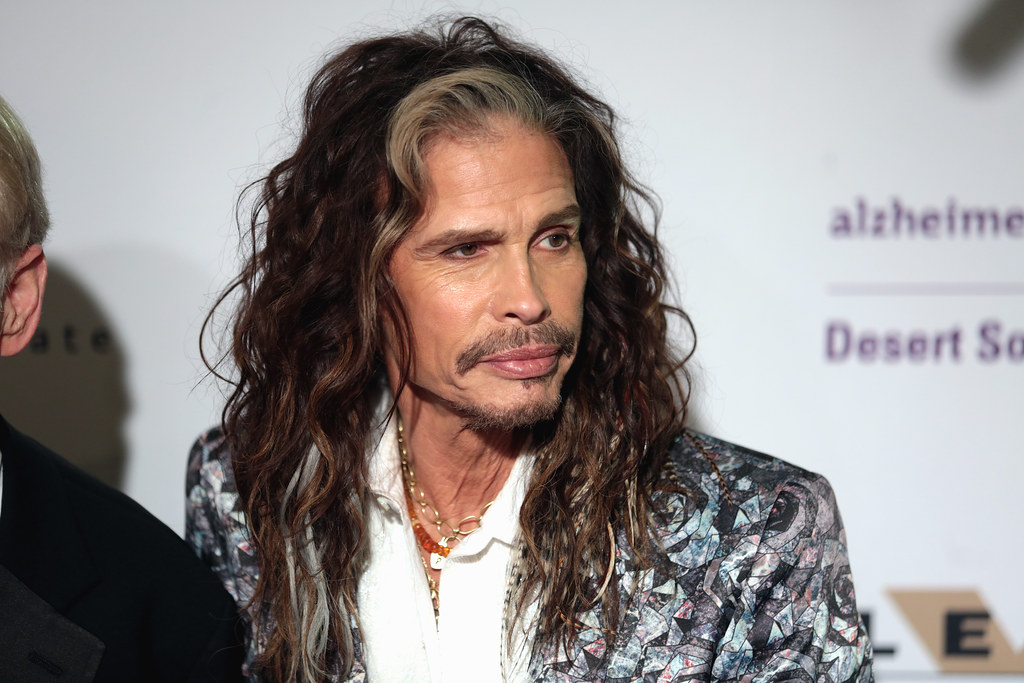
10. **Steven Tyler vs. Joe Perry: The Toxic Twins’ Tumultuous Tango**Aerosmith’s “Toxic Twins,” frontman Steven Tyler and guitarist Joe Perry, seemed to thrive on chaos, yet their volatile relationship severely disrupted the 1979 recording of *Night in the Ruts*. Addiction and infighting led to massive production delays and financial strain, forcing a tour that only intensified tensions. The inevitable, explosive confrontation, however, began not with the bandmates, but with their wives backstage in Cleveland on July 28th, 1979. A verbal exchange between Terry Hamilton and Elyssa Perry escalated into a physical one involving thrown ice and milk.
Tyler stumbled into this melee, frustrated and unable to intervene. He lashed out at Perry, demanding, “Man, can’t you come over here and control your woman?'” This sparked an even more furious screaming match, which continued after the show. Tyler vividly recalled yelling, “You’re ing fired!” from the trailer steps, marking the abrupt, albeit temporary, end of Perry’s time in Aerosmith. It would take nearly five years for Perry to rejoin.
Despite periods of sobriety and reconciliation, cracks reappeared by 2009. Tyler unilaterally pulled out of a South American tour, focusing on “Brand Tyler,” much to Perry’s dismay. Perry fueled rumors of Tyler’s permanent departure and even announced vocal auditions for a replacement, prompting a “cease and desist” letter from Tyler. Even after Tyler’s return, fresh hostilities erupted in 2010 when he became an *American Idol* judge. Perry publicly derided the show as “one step above Teenage Mutant Ninja Turtles” and declared, “I don’t want Aerosmith’s name involved with it.” The band’s fate, perpetually oscillating between harmony and discord, remains as murky and unpredictable as ever.
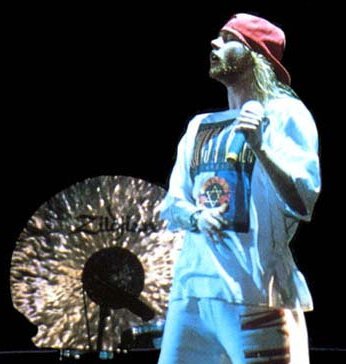
11. **Slash vs. Axl Rose: The Gunpowder and Roses Implosion**The partnership of Slash and Axl Rose, the explosive core of Guns N’ Roses, was defined by both staggering creative brilliance and equally fierce personal animosity. A devastating blow landed in 1991 when Slash contributed a guitar solo to Michael Jackson’s “Black or White.” Rose, who claimed to have been molested as a child, deeply resented Slash’s collaboration due to Jackson’s own child-abuse accusations, viewing it as a profound betrayal. This incident irrevocably fractured their already strained relationship.
Rose swiftly sought revenge, notably replacing Slash’s playing with Paul Huge on GN’R’s cover of The Rolling Stones’ “Sympathy for the Devil.” This act of musical erasure, coupled with Rose securing legal ownership of the band’s name, effectively demoted his bandmates and pushed their partnership to breaking point. By 1996, Slash officially parted ways with Guns N’ Roses, sparking decades of public acrimony that transcended their musical split.
For years, the two iconic figures would not speak, but their war of words raged fiercely in the press. Rose publicly disparaged Velvet Revolver, Slash’s new project, and escalated his attacks in a chilling 2009 Spinner interview. He declared, “Personally I consider Slash a cancer and better removed, avoided,” a barb made crueler by Slash’s mother’s recent death from breast cancer. Rose repeatedly stated reconciliation was impossible, telling Billboard, “One of the two of us will die before a reunion.”
Against all odds, however, one of rock’s most improbable truces was declared in 2016. The announcement that Slash would rejoin Guns N’ Roses to perform alongside Rose for a series of global tour dates sent shockwaves through the music world. Slash, in a telling interview with Sweden’s Aftonbladet, simply remarked, “It was probably way overdue,” acknowledging the end of an era of profound animosity. This reconciliation underscored the unpredictable nature of rock star relationships, proving that shared legacy and lucrative tours can sometimes triumph over even the deepest-seated feuds.
12. **Oasis vs. Blur: The Battle for Britpop Supremacy**The mid-Nineties Britpop rivalry between Oasis and Blur transcended mere musical competition, evolving into a cultural battleground reflecting class and regional divides. Initially, both bands shared a mutual respect, but Oasis’s headstrong Gallagher brothers soon resented being perpetually grouped with Blur. The beef truly ignited in spring 1995 when Damon Albarn of Blur attended an Oasis celebration for their first UK Number One, “Some Might Say.” Albarn recounted Liam Gallagher’s taunt, “‘Number fookin’ one!’ right in my face,” which he took as a personal challenge.
Provoked, Albarn orchestrated a direct charts showdown, scheduling Blur’s single “Country House” for release on the same day as Oasis’s “Roll With It.” This masterstroke created “The Battle of Britpop,” a cultural phenomenon where Blur represented elitist, middle-class Londoners, contrasting sharply with Oasis’s portrayal of rough-necked, working-class northern Englanders. When Blur’s “Country House” outsold “Roll With It,” securing the Number One spot, their camp initially offered courteous, unifying remarks, with bassist Alex James downplaying the animosity.
The Gallaghers, however, were not ready for reconciliation. Liam, fiercely competitive, told NME he “cared, ’cause I want number ones,” recounting a pub exchange where he vehemently declared, “this is why I in’ hate your band, and you. I thought our song was top.'” Noel, notorious for his unfiltered venom, was even more shocking, telling The Observer, “I hate that Alex and Damon. I hope they catch AIDS and die.” Six months later, Oasis offered a mocking cover of Blur’s “Parklife” at the Brit Awards, retitling it “Shitelife,” solidifying their reputation for public disdain.
Yet, in an unexpected turn, relations between Noel Gallagher and Damon Albarn began to thaw in 2011, reportedly aided by alcohol. Noel, reflecting on their chance meeting in a club, told Shortlist, “What the was all that about 15 years ago? That was mental.” He wryly observed the media’s preference for conflict over respect. The Britpop battle left an indelible mark, proving that even the fiercest rivals can find common ground, eventually.

13. **Tupac Shakur vs. The Notorious B.I.G.: The Tragic End of an Era**The devastating feud between Tupac Shakur and The Notorious B.I.G. remains one of hip-hop’s most infamous and tragic chapters, a rivalry that tragically consumed both their lives. Their story began with a bond formed on the set of John Singleton’s *Poetic Justice* in 1993, with Biggie recalling to Vibe, “We just clicked off the top and were cool ever since.” This camaraderie, however, was violently shattered on November 30th, 1994, when Tupac was ambushed, robbed, and shot five times outside New York’s Quad Recording Studios. Badly injured, Tupac harbored a deep, festering suspicion that Biggie had foreknowledge of the brutal attack.
Tupac’s fears were horrifically amplified when Biggie released “Who Shot Ya?” months later. The song, with its seemingly taunting title, appeared to mock the very incident. Despite Biggie’s denials, Tupac, from prison, unequivocally viewed it as an admission of guilt. In a fiery Vibe interview, he publicly accused Biggie and Bad Boy Records chief Sean “Puffy” Combs, arguing that Biggie should have withheld the song. This public accusation irrevocably set the stage for one of music’s most bitter and deadly rivalries.
The stakes escalated dramatically in October 1995 when Tupac signed with Suge Knight’s Death Row Records, securing his $1.4 million bail. This alliance immediately placed Tupac on a direct collision course with Knight’s rivals at Bad Boy Records – particularly Puffy and Biggie – igniting the devastating East Coast–West Coast hip-hop war. The battle moved beyond personal slights, becoming a full-blown institutional conflict fueled by label loyalties and escalating territorial disputes.
Tupac unleashed his heaviest lyrical artillery with “Hit ‘Em Up,” a blazing response to “Who Shot Ya?” The track opened with the inflammatory cry, “I ain’t got no friends/That’s why I ed your bitch, you fat .” He continued his relentless verbal assault in interviews and on tracks like “Against All Odds.” Biggie, surprisingly, never released an official recorded response, seeming genuinely hurt in a 1996 Vibe interview, stating, “I can’t believe he would on him like that.” Tragically, any chance of reconciliation evaporated before Tupac was gunned down in Las Vegas in September 1996. Suspicions immediately fell on Biggie, who strenuously denied involvement. Just six months later, in March of the following year, Biggie himself became the victim of a drive-by shooting in Los Angeles. Both murders remain hauntingly unsolved, leaving a heartbreaking void and serving as a somber reminder of a rivalry that spiraled beyond artistic competition into fatal tragedy.
As we close the book on these 13 captivating clashes, it’s clear music is more than melodies; it’s a volatile arena. Towering egos, clashing visions, betrayals, and fame’s immense pressure ignite infernos reshaping careers, splintering friendships, and altering legacies forever. From sibling squabbles to lyrical wars, these feuds are integral chapters in pop culture’s ongoing saga. They remind us that behind every iconic track lies a complex tapestry of human drama—a testament to raw, often messy, artistic expression. And perhaps, that’s precisely why we can’t look away.


